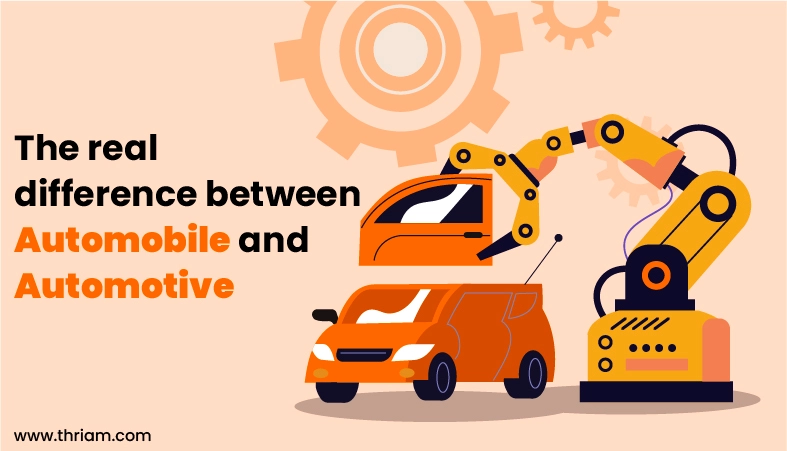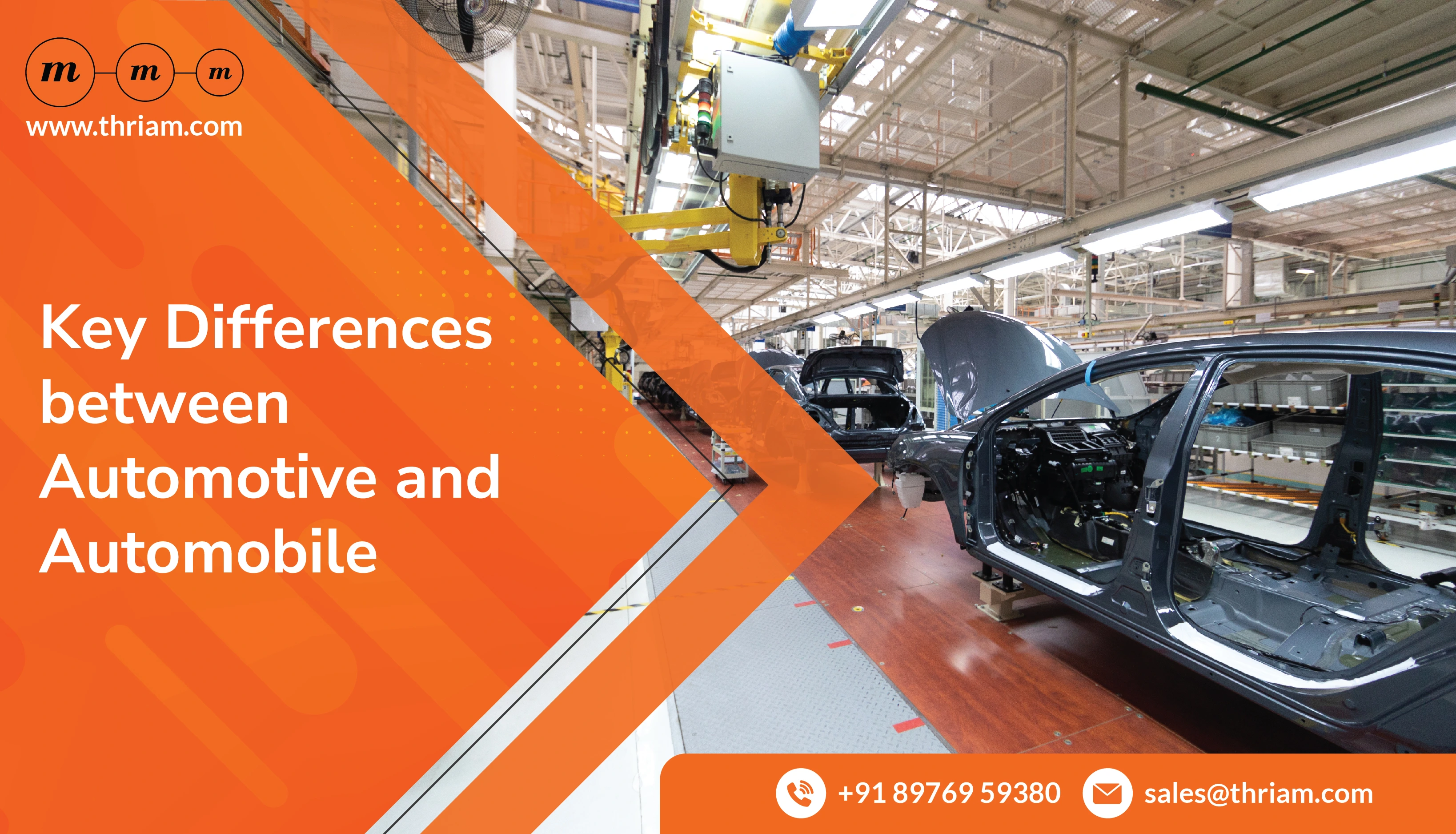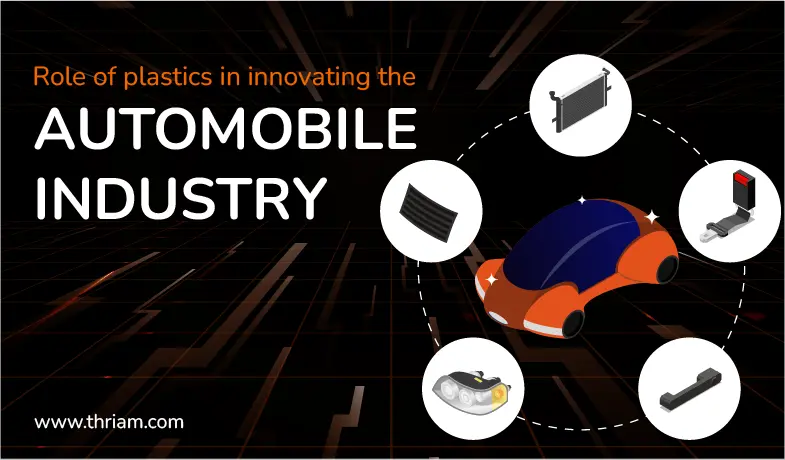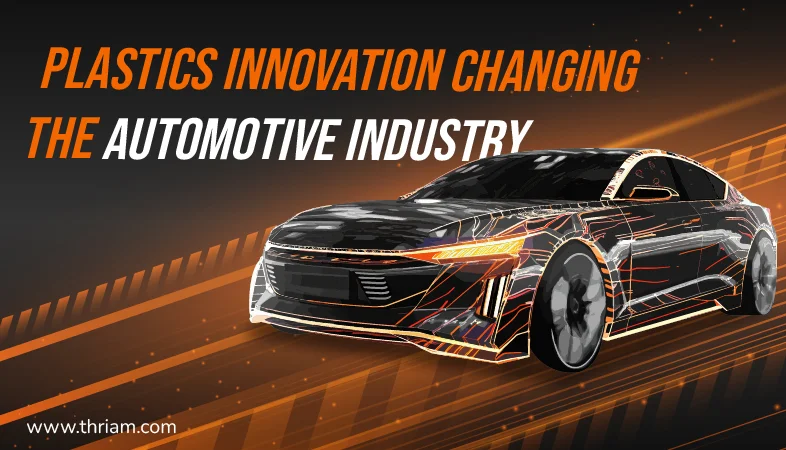Clearing the Confusion: Automotive vs Automobile - What's the Real Difference?

In today's world, the terms "automotive" and "automobile" are often used interchangeably. However, it's important to understand that while these terms are related, they are not exactly the same. By exploring the difference between automotive and automobile, we can gain a deeper understanding of the industry and its various components.
Definitions
Automotive:
The term "automotive" refers to anything related to vehicles or the automotive industry as a whole. It encompasses a wide range of activities, including vehicle manufacturing, sales, servicing, and the overall business and technology aspects of the automotive industry. Essentially, "automotive" is a comprehensive term that covers all aspects of vehicles, their production, and the industry that supports them.
Automobile:
The term "automobile" refers specifically to a type of vehicle that is designed for transportation and is primarily used for personal transit. It typically refers to passenger cars, which are motorized vehicles with four or more wheels that are designed to carry passengers. The term "automobile" is narrower in scope compared to "automotive" and specifically refers to the category of vehicles designed for personal transport.
Key Differences between Automotive and Automobile

Scope and Application:
The first notable difference lies in the scope and application of these terms.
Automotive: The term "automotive" encompasses a broad range of activities related to vehicles and the automotive industry. It involves vehicle manufacturing, sales, servicing, and technologies that support the industry as a whole. Automotive includes not only passenger cars (automobiles) but also commercial vehicles, motorcycles, and off-road equipment.
Automobile: On the other hand, "automobile" refers specifically to a category of vehicles designed for personal transportation. It primarily encompasses passenger cars, which are motorized vehicles with four or more wheels designed to carry passengers.
Understanding this distinction helps us appreciate the larger scope encompassed by the term "automotive" and the specific focus of "automobile" on personal transportation vehicles.
Technological Advancements:
Another significant difference lies in the technologies and advancements associated with each term.
Automotive: Automotive technologies encompass a wide range of innovations that apply to various types of vehicles. This includes advancements in electric vehicles, hybrid vehicles, fuel cell vehicles, and autonomous driving technologies. It encompasses developments in vehicle manufacturing processes, energy efficiency, safety features, connectivity, and automation.
Automobile: Automobile technologies, while also advancing in line with automotive technologies, are primarily focused on features specifically applicable to passenger cars. This includes advancements in engine performance, fuel efficiency, emissions control, safety features such as advanced driver assistance systems (ADAS), entertainment and connectivity systems, and comfort features such as enhanced ergonomic designs.
Understanding this distinction allows us to recognize the breadth of technologies embraced by the automotive industry as a whole, while acknowledging the specific advancements tailored to enhance the driving experience and comfort of automobile occupants.
Common misconceptions about Automobile and Automotive
Automotive and Automobile are interchangeable:
One prevalent misconception is that "automotive" and "automobile" can be used interchangeably. While they are related, they hold distinct meanings.
The terms only refer to traditional internal combustion engine vehicles:
Another misconception is that "automotive" and "automobile" only apply to conventional internal combustion engine (ICE) vehicles.
Automobile: A Subcategory of Automotive
Within the broader automotive industry, the term "automobile" represents a specific category of vehicles. Automobiles play a vital role within the larger automotive industry. Below we will explore how automobiles fit within this broader industry, highlighting their significance and contribution to the sector's evolution.
Foundation of Personal Transportation:
Automobiles are the cornerstone of personal transportation, forming the foundation of the automotive industry. They are specifically designed to transport individuals and goods in a convenient and efficient manner. As such, automobiles have become an integral part of our daily lives, providing mobility for work, leisure, and essential activities.
Dominant Segment of the Industry:
Within the vast automotive industry, automobiles represent the largest segment. Passenger cars serve as the primary focus of the industry, targeting individual consumers seeking personal transportation solutions. Various types of vehicles fall under the automobile category, including sedans, SUVs, crossovers, and hatchbacks, catering to diverse customer preferences.
Market Catalyst:
Automobiles act as a catalyst for innovation and competition within the automotive industry. Automakers continuously strive to introduce new models with advanced features and improved performance to capture consumer interest and gain a competitive edge. This drive for innovation ultimately benefits the entire industry, pushing manufacturers to improve technologies and enhance overall vehicle quality.
Economic Impact:
Automobiles have a substantial impact on the overall economy, contributing to employment, manufacturing, and economic growth. The production of automobiles involves a vast network of suppliers, dealerships, manufacturing facilities, and aftermarket services, providing employment opportunities across various sectors. Automobile manufacturing also drives related industries such as steel, plastics, electronics, and more.
Conclusion
In conclusion, the terms "automotive" and "automobile" are closely related yet distinct in their meanings. Understanding the difference between these terms allows us to grasp the complexity of the automotive industry, its various sectors, and the innovations that shape it. By further exploring this topic and expanding our knowledge, we can appreciate the ever-evolving nature of the automotive world.
Remember, the difference between automotive and automobile goes beyond mere semantics. It helps us navigate this vast industry and opens up new horizons for technological advancements and sustainable transportation solutions. So, let's dive deeper and continue to explore the fascinating realm of automotive excellence.



